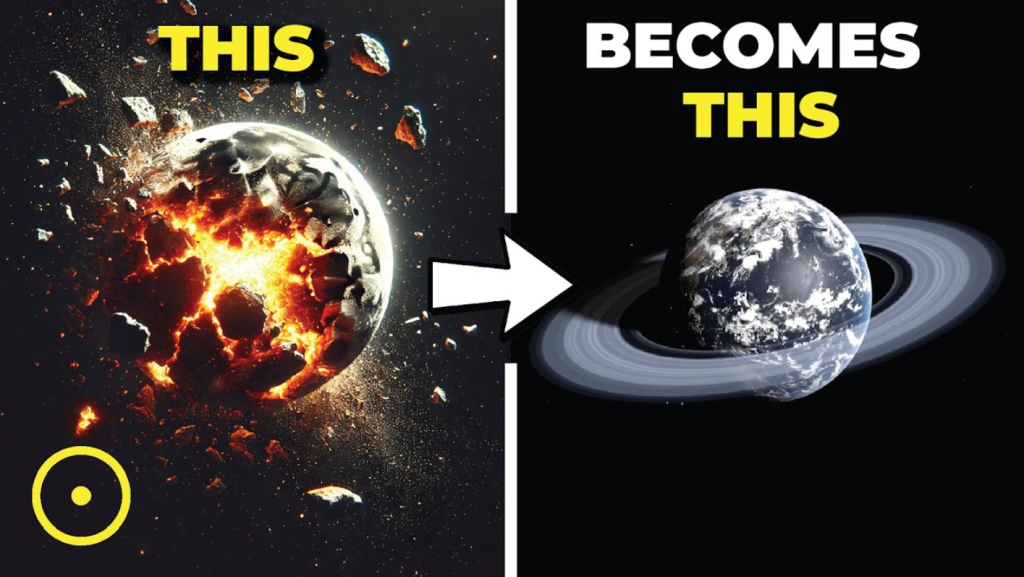Imagine a scenario where the Moon is suddenly heading toward Earth. Scientists detect a shocking anomaly: the Moon is getting closer to our planet. Over weeks, its presence in the sky grows increasingly ominous. As it crosses the Roche limit— the point where tidal forces from Earth begin to break it apart—huge chunks of the Moon start to fall toward us. These lunar debris pieces enter Earth’s atmosphere, creating fiery streaks across the sky, and massive boulders crash into cities, triggering explosions and fires.

The Earth’s surface becomes a chaotic battlefield. Tsunamis surge across coastlines, devastating towns and wiping out entire regions. The resulting seismic activity causes earthquakes of unprecedented strength, opening deep fissures in the land. The heat from the falling debris ignites wildfires, while thick smoke and ash darken the sky, plunging the planet into a perpetual twilight.
Simultaneously, the International Space Station (ISS) faces critical damage as the lunar debris destroys its structure. Communication satellites are knocked offline, causing widespread blackouts and rendering GPS systems useless. The once-clear night sky is now a chaotic mess of glowing debris trails, making space travel nearly impossible.
Amid the chaos on Earth, the atmosphere becomes hazardous to breathe, worsening the already catastrophic conditions. The lack of sunlight plunges temperatures, potentially triggering an “impact winter.” Cities are reduced to rubble, and survival becomes the primary concern. Governments struggle to issue emergency alerts, while emergency services are overwhelmed by the scale of destruction.
A ring of lunar debris forms around the Earth, creating a constant reminder of the catastrophe above. These fragments, ranging from tiny pebbles to massive boulders, continue to rain down, causing smaller fires and impacts. The view of this eerie ring in the night sky, while beautiful, serves as a constant reminder of the disaster.
In reality, though, the Moon is not on a collision course with Earth. It’s slowly drifting away at a rate of about 1.5 inches per year due to tidal forces. So, while the thought of such a cosmic disaster is fascinating, we can rest easy knowing that the Moon is actually moving further from us, not closer.
This scenario may be purely hypothetical, but it offers a captivating look at what might happen in the face of a celestial collision.